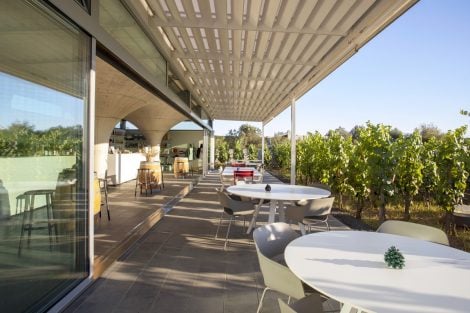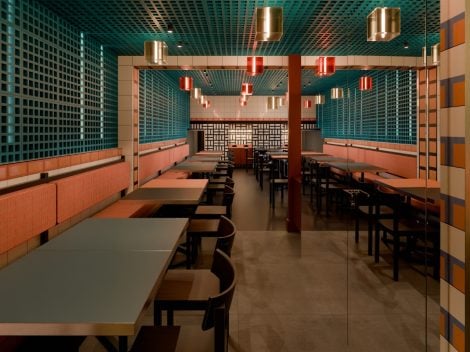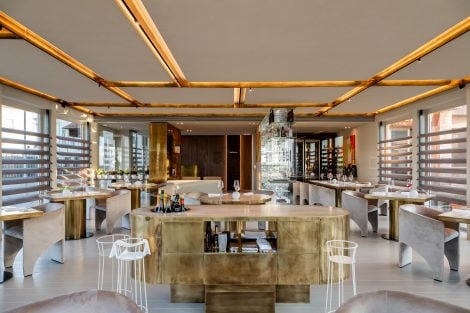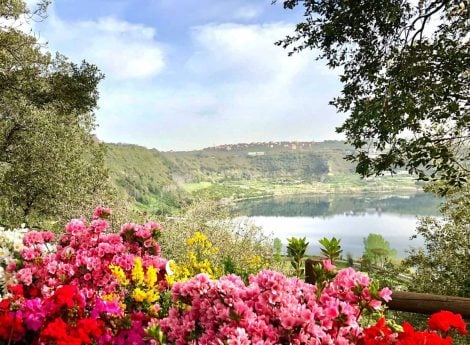Riding on the success of Provence, with its very light pink wines and delicate aromas, many Italian regions - and many countries around the world - have started to look more closely at rosés. This type represents over 10% of wines consumed globally; in France, consumption exceeds 35%. In Italy, rosé production is around 10% of total wines produced, with about half destined for export.
While many territories have followed the Provencal style, Cerasuolo d'Abruzzo has remained impervious to trends. Its wines, based on Montepulciano grapes, are characterized by an intense pink color, fruity richness, and a dense texture, resulting in a deep and persistent sip. Due to its characteristics, it finds its ideal place at the table. We explored this theme with chefs and sommeliers from the top five restaurants in Abruzzo.
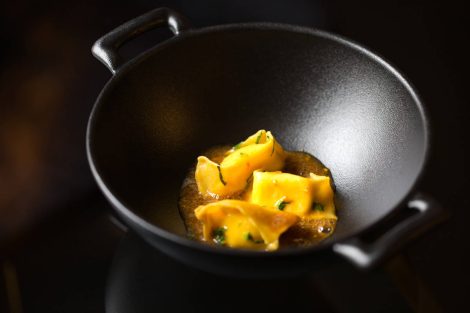
Shepherd 2.0: D.One's Fagottelli dedicated to Gregorio Rotolo and his cheese
At Ristorante D.One
Our journey into Cerasuolo begins at the D.One restaurant, with sommelier Luca Fabiocchi working alongside the owner, Nuccia De Angelis, and chef Davide Pezzuto. Is it a true boom? "Cerasuolo is gaining a significant market share, and many companies produce excellent versions," explains Fabiocchi. "However, the regulations allow the use of 15% other red grapes, which, combined with the natural tendency to follow trends, can result in wines that are too simple. I am convinced that Cerasuolo should remain true to its identity and continue to be a rosé with an intense color, good structure, and aromatic intensity."
With Cerasuolo, we are in the world of pink wines. How do they function today concerning a wine list that must cater to increasingly complex and diversified menus? "Among rosés, it holds the most important place. In our wine list, we have labels of Cerasuolo from Abruzzo that produce wines in a classic style," says the sommelier. "For some labels, we offer different vintages to showcase the evolving characteristics of the wine. However, I also find Puglian rosés, those from Etna, and even some rosés from Tuscany interesting."
But what is the specificity of Abruzzo's rosés? "Cerasuolo is undoubtedly a versatile wine that pairs well with both seafood and meats. It's perfect with some dishes on our menu, such as Gregorio Rotolo's Fagottelli stuffed with cheese, Davide Pezzuto's Tagliatellina with cuttlefish, red onion gel from Tropea, and smoked black cardamom Abruzzese Manzetta."
At Reale by Niko Romito
With Gianni Sinesi, sommelier at the Reale restaurant by Niko Romito in Castel di Sangro, we talked specifically about pairings with vegetarian dishes. Which are not necessarily part of an imagination linked to tradition. "Certainly, Cerasuolo d'Abruzzo has always been a traditional wine. Thanks to innovation and the evolution of winemaking techniques, though, it is now also a research wine."
And is it a wine that stands up to the challenge of meeting Niko Romito's research-based vegetable dishes? "The chef's research on the vegetable world has led to very intense and identity-driven dishes where acidity and bitterness are often protagonists. For example, Cerasuolo pairs very well with vegetables presenting these tendencies, such as roasted escarole or lettuce, or the dish with broccoli leaf and anise, artichoke with radicchio and peanuts." Only vegetables? "Absolutely not. Certainly, Cerasuolo goes very well with our dishes that span the world of meat in all its aspects: I think of Roasted Squid, Fondant Pigeon with pistachio, and Sea Bass with lentils, hazelnuts, and garlic."
Villa Maiella in Guardiagrele
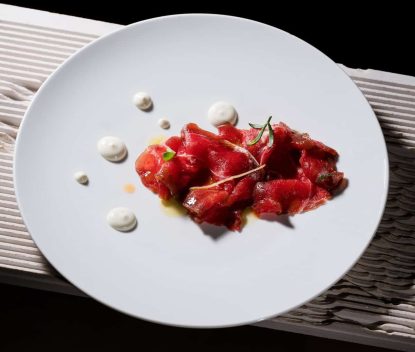
Villa Maiella: Like a Carpaccio (Veal Marinated in Coffee and Mountain Cumin)
We move to Guardiagrele to meet Pascal Tinari, sommelier at the family restaurant Villa Maiella, and hear about his experiences with Cerasuolo. "Our proposal is characterized by respect for the territory and the search for authenticity in the products and ingredients we use. Cerasuolo fits perfectly into this vision, and that's why we don't offer rosés from other regions on our wine list. Cerasuolo is very versatile, offering a range of different interpretations depending on the area of origin and the producer's style. Mountain wines express more freshness, while those from the coast are richer."
So, staying strictly within the territorial context, what are the best dishes to pair with Abruzzo's rosé? "A well-structured Cerasuolo pairs very well with our intense-flavored cured meats, certainly with our Pallotta cheese and egg. It can also pair well with a traditional Vasto fish soup or dishes based on grilled lamb, or even with 'chicken in the cup' cooked directly on the fireplace."
Pascal has also been involved in various experiences abroad, particularly in France. What - if any - differentiates the Italian approach to rosés compared to trends across the Alps? "Apart from the Tavel denomination, delicate and light wines dominate in Provence. Cerasuolo has the advantage of having its own identity and a good gastronomic inclination. In each of our tasting menus, I include at least one Cerasuolo. Today, it is important to work towards consolidating the identity of Cerasuolo, to build value for the future. Cerasuolo has all the credentials to carve out a space in the world of rosés."
La Bandiera in Civitella Casanova
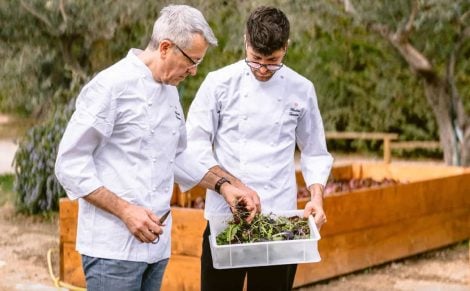
Marcello Spadone and his son Mattia in the garden of La Bandiera in Civitella Casanova
In Civitella Casanova, we met chef Marcello Spadone, who shared his perspective on Cerasuolo and its interactions with his menu and his culinary philosophy. "In Abruzzo, Cerasuolo has a great tradition and a significant place at the table. On our wine list, we also have other rosés, but Cerasuolo holds a prominent place," says the chef. "It pairs very well with vegetable soups, legume soups, and, in general, vegetable-based dishes. For example, it pairs perfectly with Fracchiata, a soup made with broad beans, chickpeas, and lentils, served with rice puff meatballs and wild chicory. But it also goes well with pasta and beans or a mushroom soup, partly cooked and partly raw, and with our crispy lentils, almost blown."
Essentially vegetable-focused, then? "No, Cerasuolo is perfect even with white meats. It goes well with our three-cooked chicken or with local rooster. Even with lamb cooked simply, you can pair it with a rather concentrated and well-structured Cerasuolo." A gastronomic future for Abruzzo's rosé? "I believe that for the future, it's important that our Cerasuolo doesn't lose its identity. It shouldn't succumb to the temptation of making sweet, soft, and easy wines. It must maintain its traditional character, faithful to the Montepulciano grape and the customs of the region, without conforming to the model of Provencal rosés. Moreover, Cerasuolo also ages well and can be enjoyed even after a few years from the vintage."
"Cerasuolo is a traditional wine," explains Spadone, "that pairs very well with Abruzzese seafood dishes. The Cerasuolo that comes from the higher altitude vineyards is finer and more delicate, less alcoholic, and with more acidity, making it perfect to accompany fish-based dishes."
At Metrò in San Salvo

At Metrò in San Salvo Marina: Parmesan Rice with Red Shrimp and Tomato by Nicola Fossaceca
We conclude our journey among the best tables in Abruzzo by moving to San Salvo Marina, along the Adriatic coast. With Antonio Fossaceca, who runs the Al Metrò restaurant with his chef brother Nicola, we delved into the theme of pairings with seafood cuisine. "Those who come to Abruzzo usually already know Cerasuolo. Our task is to choose a version suitable for each dish in terms of structure and intensity. In the cellar, we have mainly labels of mountain Cerasuolo: as I mentioned, these are the ones that best match the delicacy of seafood cuisine and are closer to the characteristics of a white wine in terms of delicacy and acidity."
Any examples from the Al Metrò menu? "Let's start with Parmesan rice with red shrimp and tomato; then we move on to Tuna with tomato, almond, and onion; there's also Turbot, stuffed zucchini, and squid gyoza. Actually, in the wine-tasting journey with wines by the glass, we always propose Cerasuolo to accompany different dishes."
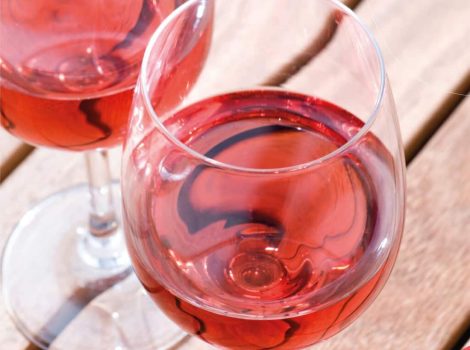
Can a fine-dining restaurant afford to have only one rosé on the menu? "Honestly, we prefer to work with local wines and offer our own territorial rosé. We have 8-9 different ones on the menu, precisely to be able to choose the best pairing for each dish." Faceted and versatile, sharp and gentle, this is Cerasuolo, the true child of an Abruzzo still much to discover.
In the cover photo: Gianni Sinesi, sommelier at Reale, in the Casadonna cellar. Photo by Andrea Straccini

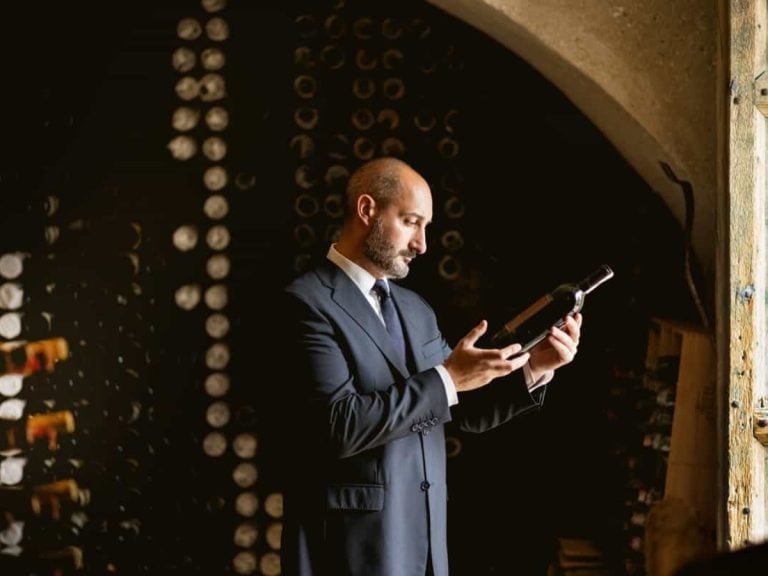
 Help us write the next guide to Italy’s Cafés and Coffee Roasters
Help us write the next guide to Italy’s Cafés and Coffee Roasters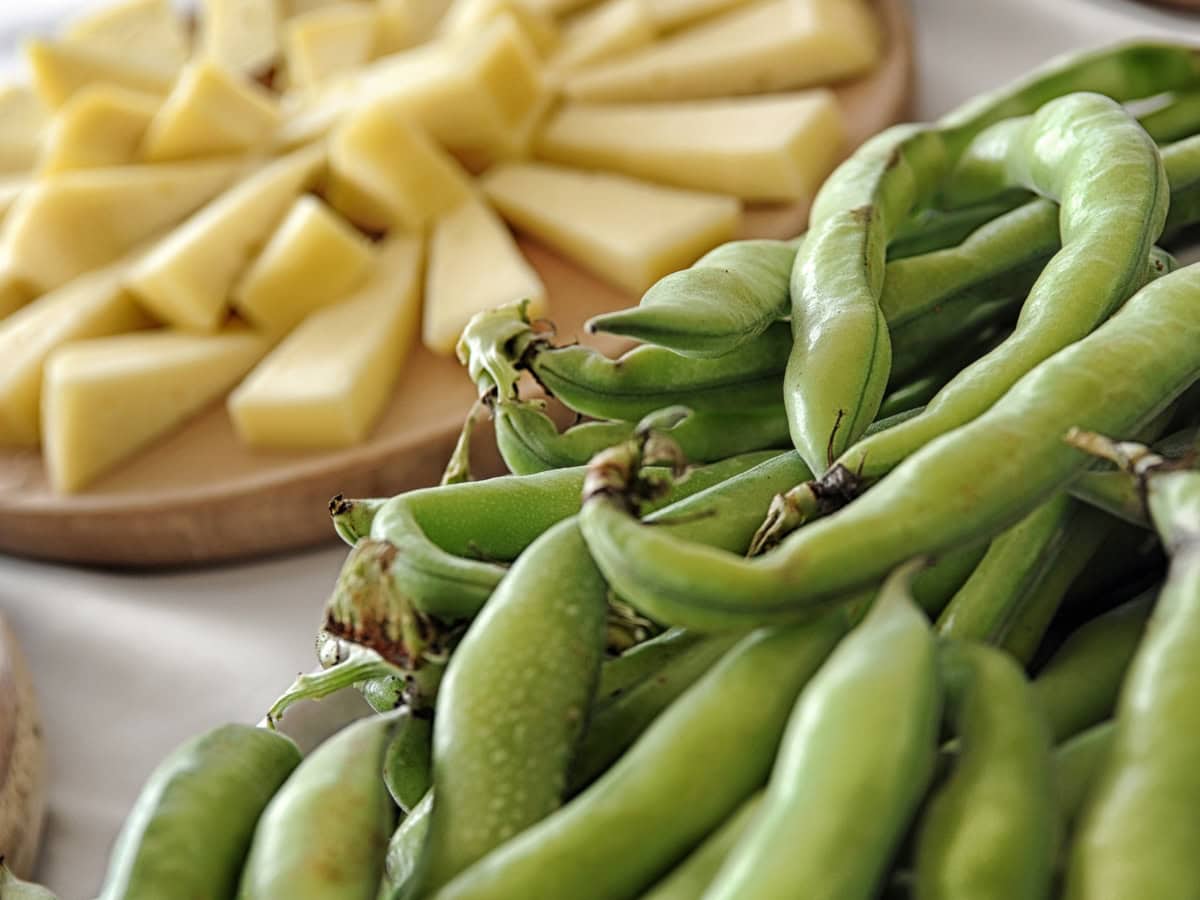 Here’s why broad beans and Pecorino are eaten on the First of May
Here’s why broad beans and Pecorino are eaten on the First of May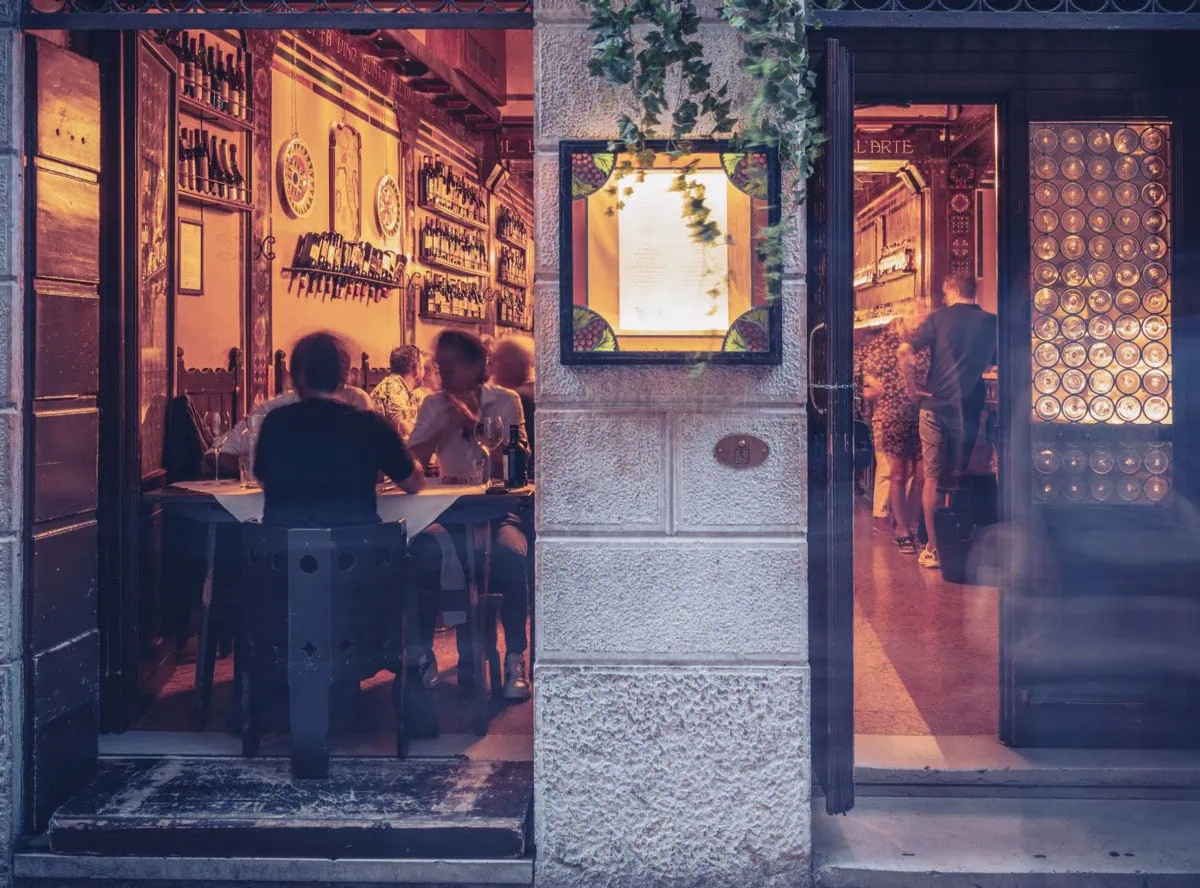 In the heart of Verona, the “sanctuary” of wine where you can sip a glass for one euro next to grand Bordeaux
In the heart of Verona, the “sanctuary” of wine where you can sip a glass for one euro next to grand Bordeaux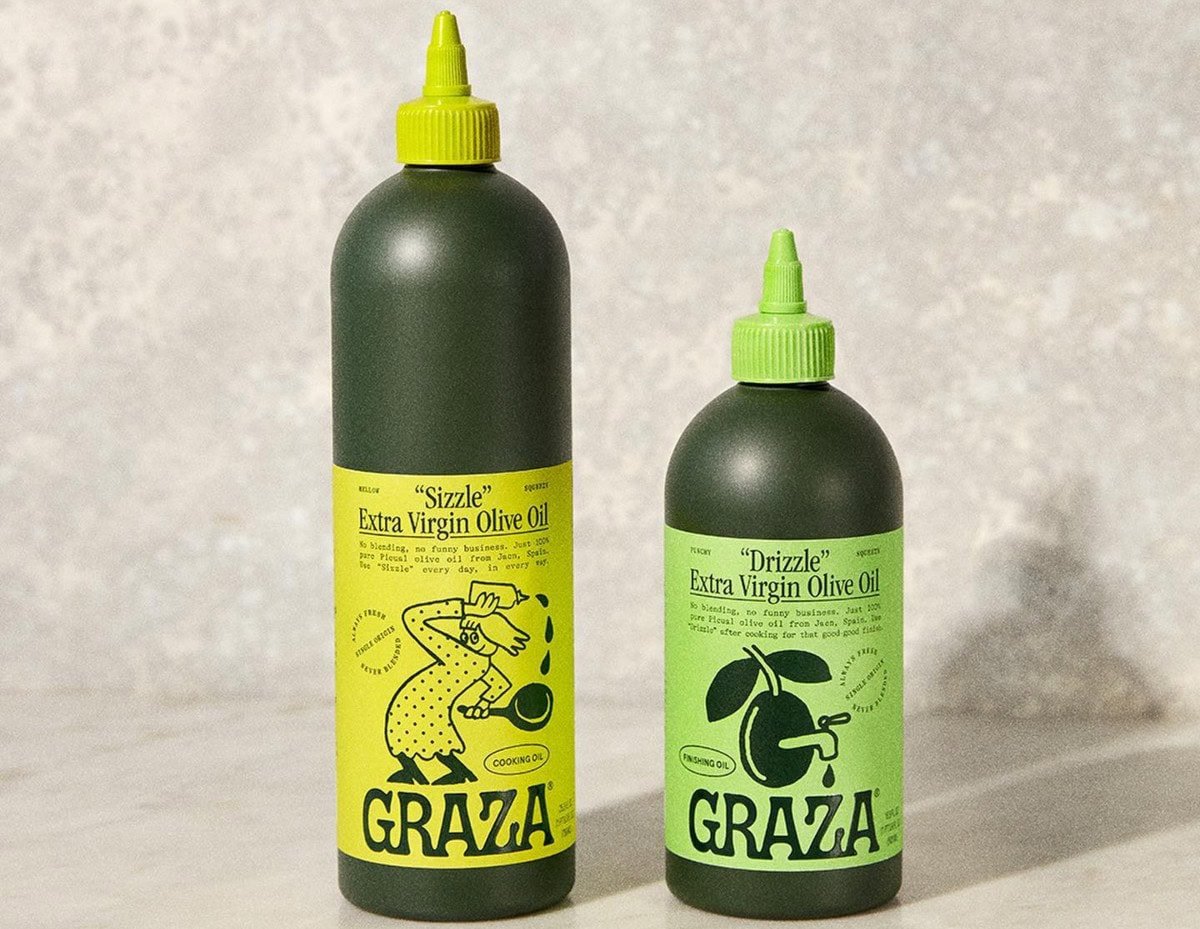 The extra virgin olive oil making waves thanks to its squeezable bottle: the curious case of Graza in the United States
The extra virgin olive oil making waves thanks to its squeezable bottle: the curious case of Graza in the United States Wine drives the export of EU-made alcoholic beverages. In 2024, France leads in revenue, Italy follows in second place
Wine drives the export of EU-made alcoholic beverages. In 2024, France leads in revenue, Italy follows in second place